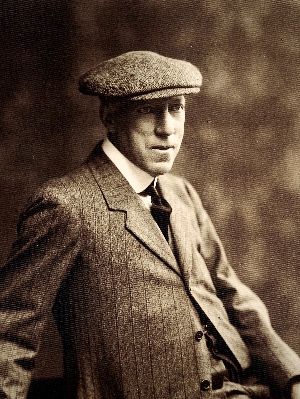Wragg, Walter
Dancer
Collection date: Aug 1910
Area: Yorkshire
Walter Wragg of Grenoside Sword Dance (6 miles N of Sheffield, South Yorks): Although Sharp (unusually) did not credit the musician at Grenoside for the 5 tunes/songs collected (FT2513-7) on 27 Aug 1910, it is believed to be Walter Wragg. In his Folk Dance Notes 1/193 Sharp recorded that Mrs Wragge, wife of the musician, made the braid for the men’s costumes and was making some for him – ‘as much as 56 yards of braid used in one tunic’. Sharp published the Grenoside dance in 'Sword Dances of Northern England' Part I (Novello 1911).
Walter Wragg was born in Burncross, nr Ecclesfield, 2 miles from Grenoside, in the October qr 1850 and was 5 months old in the 1851 census. He was the second of 5 children of George Wragg, basketmaker and his wife Sarah. George unfortunately died in 1857 and Sarah herself died in 1865. Their children set up home together in Chapeltown, led by oldest brother William, 23, an iron moulder, and Walter himself, 20, iron moulder (1871 census). Walter then married Emily Sorsby in October qr 1873 (Wortley 9c 353) and they returned to Ecclesfield, where they raised 7 children. Walter was an ‘iron moulder’ and many of his fellow dancers were quarrymen - quarrying was hard, low paid work that had long lay offs in the winter. Walter was aged 59 when he met Sharp. He died in October qr 1931 aged 81 (9c 325).
The Grenoside dance is still performed every Boxing Day by the local side. Two important features are that it is danced in clogs and that there is a mock beheading of the captain using the locked ‘nut’. Sharp saw this beheading as a remnant of some ancient primitive ritual to ensure the fertility of Nature. In Sword Dance Book 3 p12 he wrote: ’the magic rite took the form of a mock death followed by a mock resurrection, in imitation of the cyclic death of the Old Year and the rebirth of the New’. Modern scholarship, examining the evidence of sword dances performed widely across Europe since the 15th century, has seriously undermined Sharp’s primitive origins theory and Anglo-centric viewpoint. See Stephen D.Corrsin ‘The Historiography of European Linked Sword Dancing’ in Dance Research Journal 25/1 (Spring 1993) as a starting point. Sharp was simply bound by the intellectual 'fashions' of his day. His accurate reporting of the dance performances at a point in time, however, remains of great significance.
For performances of the dance today, see various YouTubes. For the intermediaries who helped Sharp to obtain the Grenoside dance, see profiles of Mrs Florence Gatty and Mrs Horatia Eden. See also 'The Grenoside Calling-on Song' article by Norman Peacock in Folk Music Journal (EFDSS vol8 no.2 2002 pp170-178) as well as 'Watching Cecil Sharp at work' by E.C.Cawte in Folk Music Journal vol8 no.3 2003 pp282-313.

